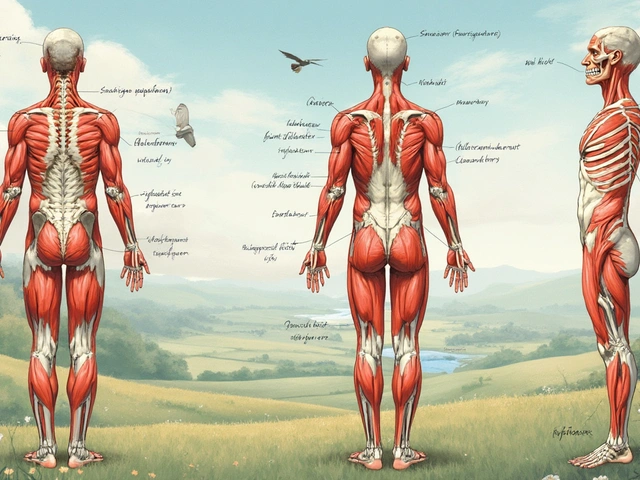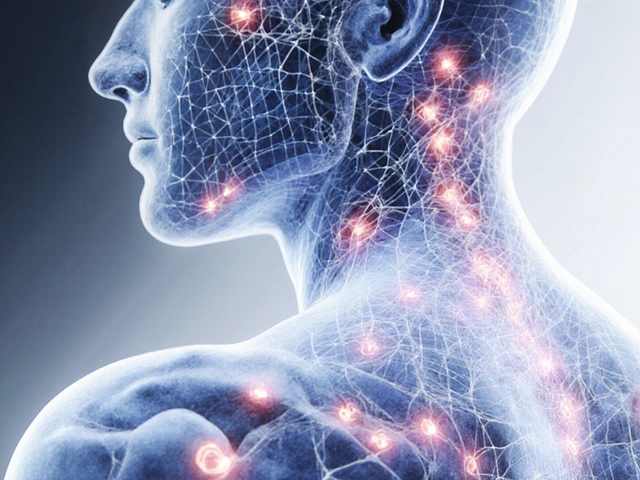Physical Well-being: Practical Massage and Bodywork for Faster Pain Relief
Body pain, stiff joints, and constant tension steal energy fast. Good news: targeted massage and simple bodywork often cut pain, improve movement, and lift mood without complicated plans. This page collects clear, usable ideas—what to try at home, which therapies help specific problems, and when you should see a professional.
Quick fixes you can try today
Got a headache? Press the webbing between your thumb and index finger for 30–60 seconds. That acupressure spot often eases tension headaches. For a tight neck, gently roll a tennis ball between your shoulder blade and a wall for one minute at a time. Trigger point self-release works: find a sore knot, apply steady pressure for 20–40 seconds, then move the joint slowly to release it.
Cold mornings make you stiff? Try warm stone techniques at home: hold a warm (not hot) towel or heated pad on sore muscles for 10 minutes before stretching. If your lower back is stubborn, Amma-style pressure along the spine and glutes can ease deep tension—find a trained practitioner or follow guided videos from qualified therapists.
Which therapy matches your problem
Different issues need different approaches. For chronic postural pain or scoliosis, structural methods like Rolfing or Hellerwork focus on alignment and can change how you move over time. If you want gentle, pain-free work, Ortho-Bionomy and Feldenkrais use small movements to retrain how your body holds tension. For fast knot relief, trigger point and deep tissue work target specific tight spots directly.
Traditional options also help. Acupressure and Polarity Therapy balance tension without machines. Hilot and Lomi Lomi add cultural rituals that many people find calming and effective. For end-of-life comfort or serious illness, palliative massage reduces suffering and offers emotional relief.
Surgical or invasive choices exist too. Contractural tendon release is for severe stiffness that limits motion; newer, less invasive techniques speed recovery compared with older surgeries. Talk with a qualified orthopedic specialist if you can’t move or pain keeps you from daily life.
When choosing a therapist, ask about training, insurance, and a session plan. A good practitioner explains what they’ll do, checks your movement, and adjusts pressure to your comfort. If work makes pain worse, stop and tell them—effective bodywork should reduce pain, not add it.
Want to keep gains between sessions? Move regularly, use short daily routines from Feldenkrais or gentle stretching, and apply heat or cold as needed. Small, consistent habits—five minutes of mindful movement, a brief acupressure routine—often beat rare, intense fixes.
If you want specific reads, check articles on trigger point relief, warm stone massage for winter blues, Rolfing for scoliosis, or the gentle approaches of Ortho-Bionomy and Feldenkrais. Pick one practical thing today, try it for a week, and see how your body responds.

Rejuvenate Your Body with Neuromuscular Massage
Hey there, beautiful souls. If you're interested in rejuvenating your body, you've landed in the right place. In this post, we'll delve into the wonders of neuromuscular massage, an amazing technique for holistic health and well-being. You'll learn how it can help recharge your body, fine-tune your muscles and bring a refreshing balance to your life. So, whether you're a massage enthusiast or a newbie looking for a natural way to rejuvenate, you're in for a treat.
Categories
- Health and Wellness (148)
- Alternative Therapies (86)
- Massage Therapy (40)
- Travel and Culture (15)
- Beauty and Skincare (9)
- Holistic Health (8)
- Health and Fitness (5)
- Spirituality (5)
- Other (2)
- Personal Development (2)
Popular Articles

Trigger Point Massage: New Hope for Pain Relief
Feb, 8 2025


